By Evelyn Nguyen, Jun 2, 2025
Once it shook the world with its immense size and stunning beauty, Son Doong Cave in Quang Binh, Vietnam, remains one of the greatest natural wonders ever discovered. Hidden deep within the jungle of Phong Nha-Ke Bang National Park, this cave is not only the largest in the world but also a place full of mystery, rare wildlife, and unforgettable adventures.
If you're curious about how to visit, what’s inside, or when to go, this guide by Incredible Asia Journeys will give you everything you need to know before stepping into this underground giant.
When was Son Doong Cave discovered? Son Doong Cave, located in Phong Nha-Ke Bang National Park, Quang Binh Province, Vietnam, was first discovered in 1991 by a local man named Hồ Khanh, but its full size and importance were only confirmed in 2009 by British cavers from the British-Vietnamese Cave Expedition Team.
How big is Hang Son Doong Cave? Son Doong Cave length stretches over 9 kilometers and reaches heights of 200 meters, large enough to fit a 40-story skyscraper inside. Its name means "Mountain River Cave" (Hang Sơn Đoòng in Vietnamese), as it was created by a river that eroded limestone beneath the mountains over millions of years.
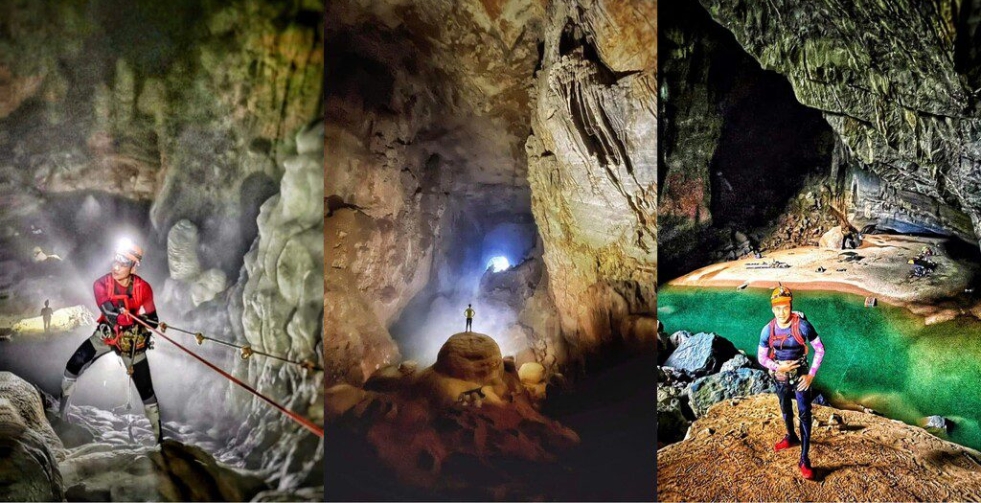
Son Dong Cave activities
2. Son Doong Cave Map & Entrance
Hidden deep in the middle of Phong Nha-Ke Bang National Park jungles in Quang Binh Province, Son Doong Cave is located near the border of Laos.
Son Doong lies around 50 km from Dong Hoi City (the provincial capital) and about 10 km south of Phong Nha town. The cave itself sits inside a strictly protected core zone of the national park. You cannot visit independently access is ONLY possible with a licensed guide and porter team through Oxalis Adventure, the sole tour operator permitted by the Vietnamese government.
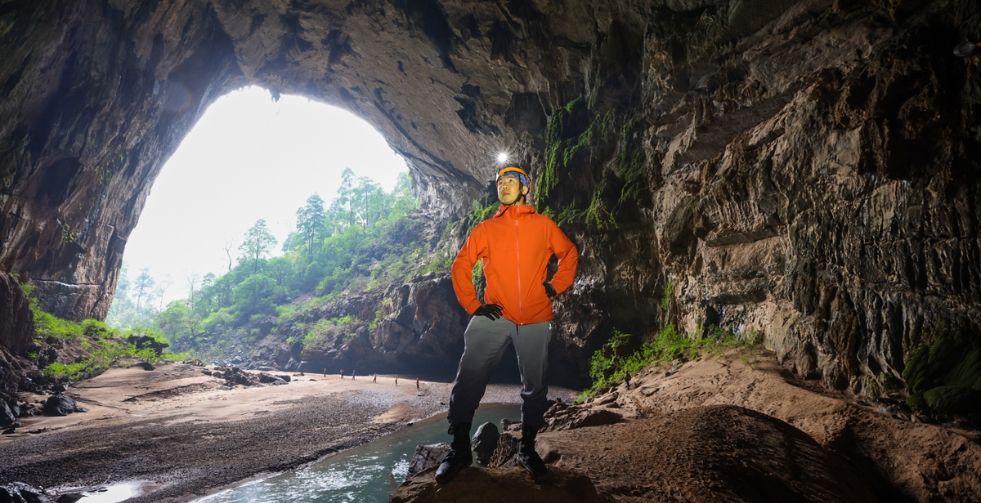
Son Doong Cave Entrance
To reach the Son Doong Cave entrance, adventurers follow a demanding multi-day trekking route that begins with a drive from Phong Nha to Km35 Road, followed by a jungle trek to Ban Doong ethnic village. This is the last human settlement before entering the deep forest.
From there, trekkers hike about 6 to 8 hours through steep terrain, narrow trails, and river crossings to reach the entrance. It marks the beginning of one of the world’s most extraordinary underground journeys.
The full mapped length of Son Doong Cave is more than 9 kilometers, with sections soaring over 200 meters tall and 150 meters wide. It’s so vast that clouds, jungles, and rivers exist entirely within the cave. Key landmarks inside the cave include:
A detailed cave map has been developed by professional speleologists and researchers, showing chambers, elevation changes, camp locations, and natural features. Due to conservation efforts, this map is not widely published but is used by Oxalis to safely guide every group.
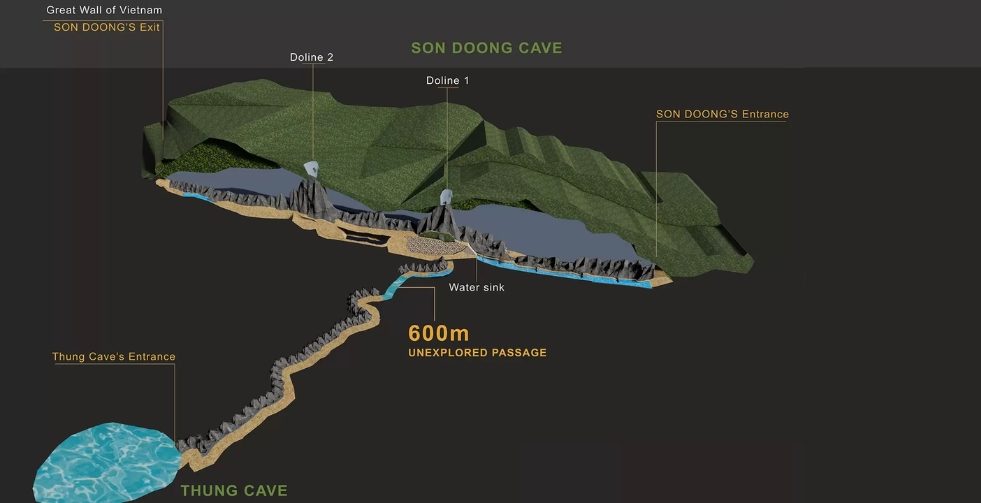
Son Doong Cave Map
Important Notes:
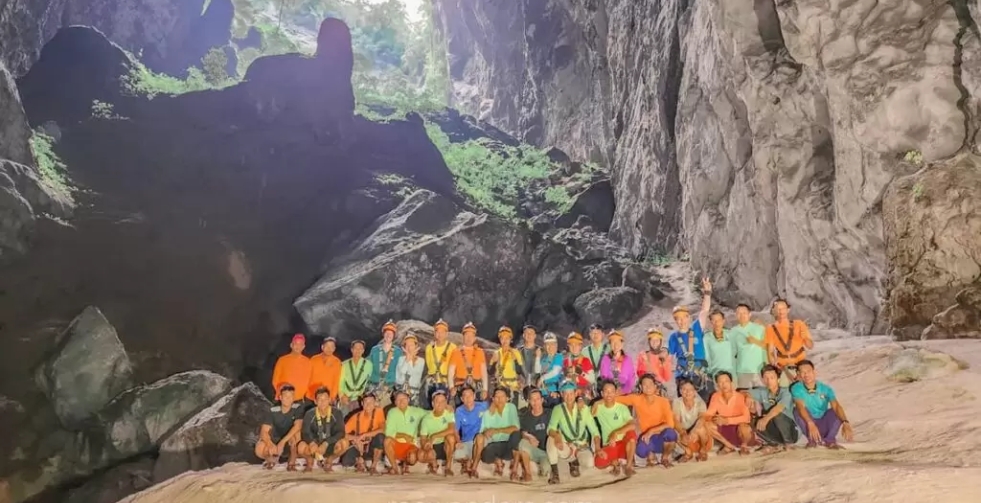
Son Doong Cave Exploration Squad
Before reaching the cave, visitors hike approximately 25 km through dense jungle, across rivers, and over rocky hills. This route passes through remote areas of Phong Nha - Ke Bang National Park, a UNESCO site known for its biodiversity and rugged limestone terrain. Along the way, travelers often pass through Ban Doong Village, one of the last remaining ethnic minority communities in the park.
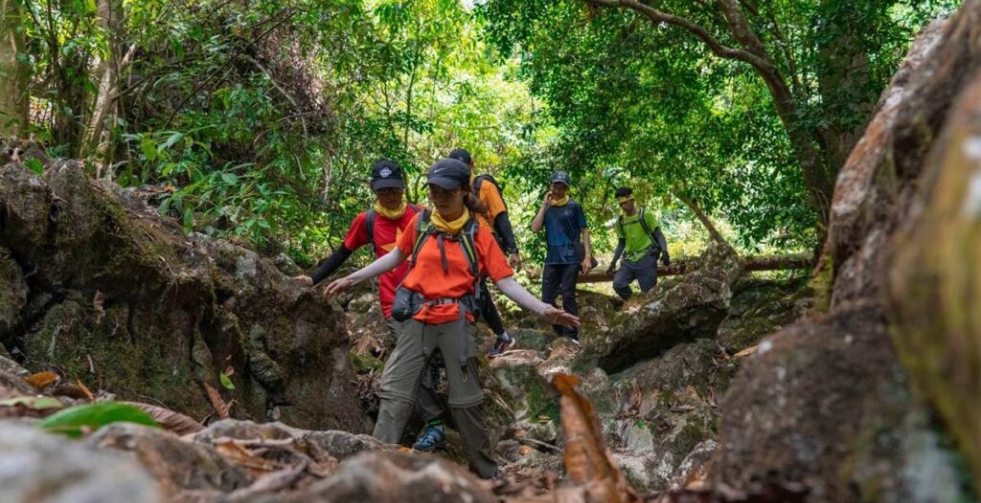
Trekking through Phong Nha-Ke Bang National Park
Camps are set up at breathtaking locations such as:
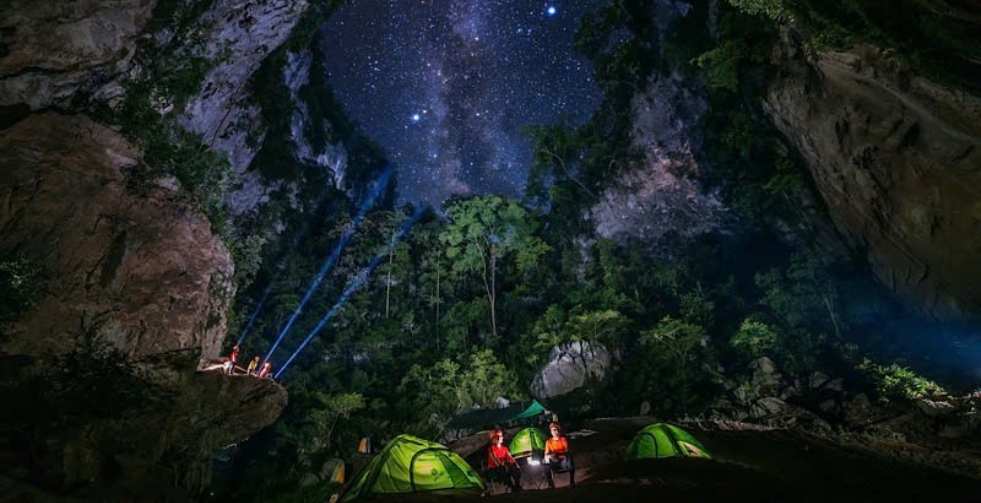
Camping Inside Son Doong Cave
The Rao Thuong River runs through much of Son Doong Cave. While swimming is not typically allowed for safety reasons, travelers often wade or walk through shallow sections. In the rainy season (not open for tours), these rivers flood dramatically, setting off underground waterfalls that can be seen during the drier months, cascading from openings in the ceiling.
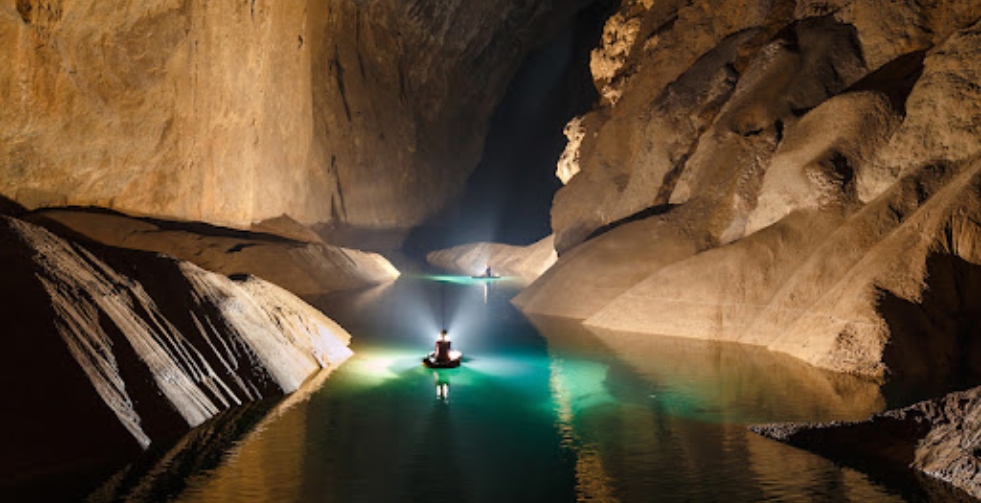
Son Doong Cave boating
The tour’s climax is climbing a massive 90-meter calcite barrier, dubbed the Great Wall of Vietnam, near the cave’s exit. Equipped with ropes and assisted by the professional safety team, travelers ascend this wall to reach the final chamber and emerge from the cave, completing the journey.
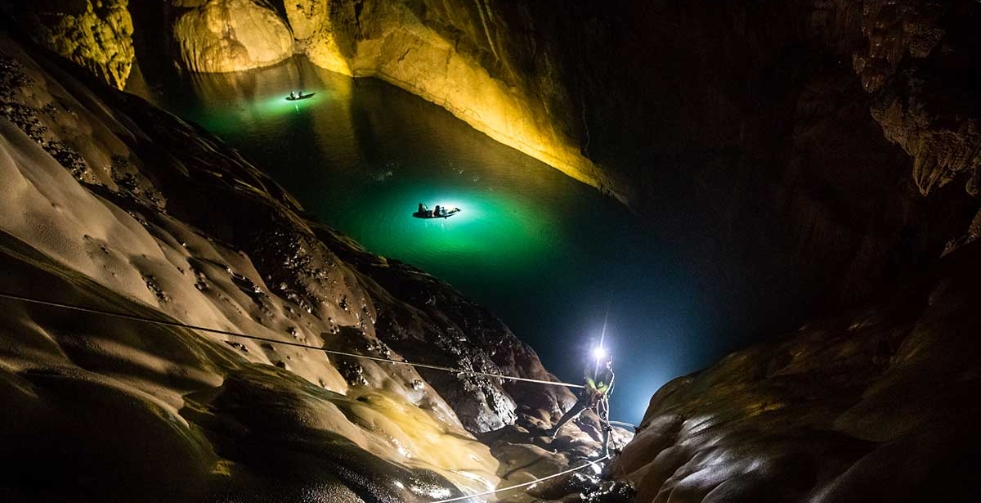
Climbing the “Great Wall of Vietnam”
Inside the cave, travelers may spot bats, blind fish, rare insects, and other cave-adapted species. Though wildlife is limited due to darkness, the sightings can be surprising. The environment is also a photographer’s dream, with massive stalagmites (up to 80 meters tall), glowing sunbeams, and mist-filled passages.

The strange creature in Son Dong Cave
Unlike most caves, Son Doong Cave climate has its own internal weather system. This is due to its massive size, underground rivers, and openings (called dolines) in the cave’s ceiling, which allow light, air, and even rain to enter. As a result, Son Doong Cave weather experiences fog, clouds, and microclimate changes, all within the cave itself.
Tour season runs from January to August. The rest of the year (September to December) is closed due to heavy rainfall and flood risks in the surrounding forest.
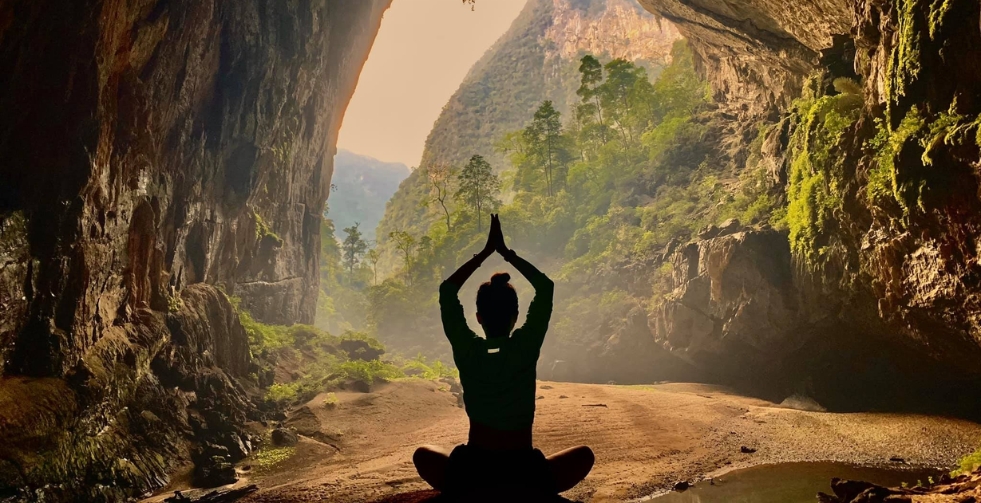
Healing in Son Doong Cave
Despite outside temperatures rising, the inside of the cave remains cool and damp all year round, averaging around 22-25°C (72-77°F).
During the rainy season (September to December), water levels rise both outside and inside the cave. Rivers can flood, making some passages dangerous. This is why tours are suspended during these months. Even in the dry season, small waterfalls may appear on rainy days, especially around dolines.
The openings in Son Doong’s ceiling allow sunlight, rain, and wind to enter, creating areas with light and vegetation inside the cave. These spots, especially around Doline 1 and Doline 2, act almost like small jungles, where plants, ferns, and even trees can grow.
Although the cave may seem quiet and lifeless at first glance, it actually shelters several types of Son Doong cave animals, especially those adapted to dark and humid environments:
The area around Son Doong is also home to various mammals, reptiles, and birds, including monkeys, snakes, and rare butterflies, although these Son Doong cave creatures are more often spotted on the jungle trek to the cave rather than inside the cave itself.
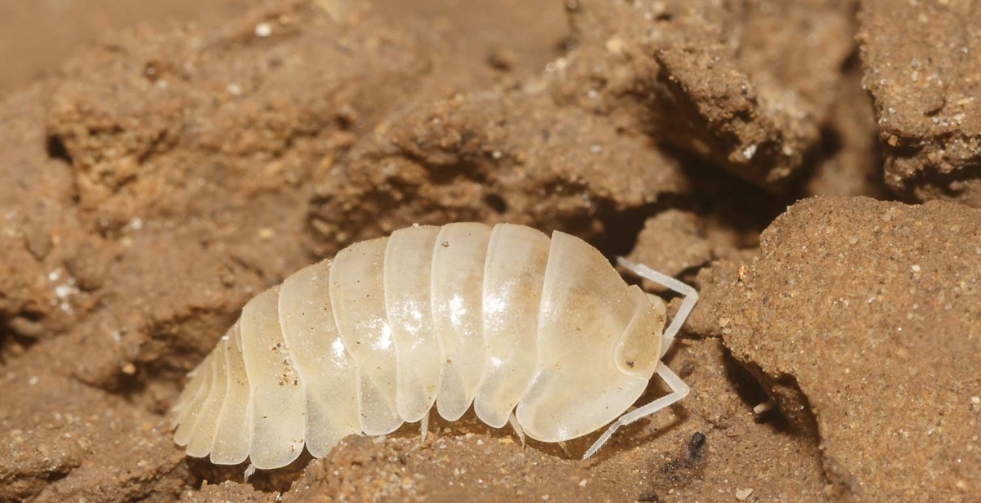
The white bug in Son Doong Cave
Son Doong Cave is so massive that a 40-story building could easily fit inside its largest chamber. The main passage is over 5 kilometers (3.1 miles) long, up to 200 meters high, and 150 meters wide.
Although local man Ho Khanh first discovered the cave in 1990, it remained hidden for years because the entrance was hard to find. It wasn’t until 2009 that a British-Vietnamese team officially surveyed it and confirmed its world record size.
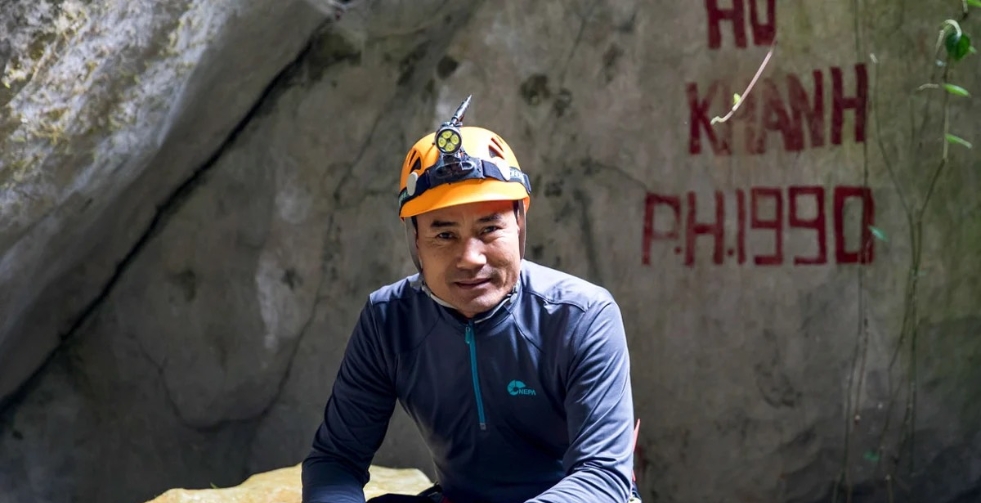
Ho Khanh - The man first found the Son Doong Cave
Due to its size and natural skylights, Son Doong has a microclimate inside. Clouds, mist, rain, and even tiny ecosystems can form independently within the cave, a very rare phenomenon in the natural world.
Access to Son Doong is strictly limited to protect its ecosystem. Each year, only around 1,000 tourists are allowed to join the expedition, making it one of the most exclusive adventures on Earth. So, you have to reserve the tour in advance for years.
The name "Sơn Đoòng" comes from Vietnamese words: “Sơn” means mountain and “Đoòng” refers to a local jungle valley where the cave is located. So the name can be roughly understood as "Mountain River Cave in Doong area."
Son Doong holds the official title of “Largest Cave in the World”, recognized by the British Cave Research Association in 2009. Its size is so immense that it could fit an entire block of skyscrapers or a Boeing 747 airplane.
In 2019, divers found an underwater passage connecting Son Doong to nearby Hang Thung Cave, which could make the entire system even longer and more massive than previously thought. So, has Son Doong Cave been fully explored? Exploration is still ongoing!
Yes, but access is limited. Only a few hundred tourists are allowed each year through official Son Doong Expedition Tours operated by Oxalis Adventure, the only company licensed to run tours inside the cave.
You must book directly with Oxalis Adventure through their website. Due to high demand and limited spots, it's best to book several months in advance. The tours usually run from January to August.
As of recent data, a 4-day expedition costs around $3,000 per person, including transportation, meals, camping gear, safety equipment, and a professional team of guides and porters.
The Son Doong cave adventure tour requires a high level of physical fitness. Visitors must pass a health check and complete a short physical assessment. You'll be trekking in the jungle, climbing rocks, and camping for several days in remote areas.
Yes! There are underground rivers where you can wade or swim in some areas, and campsites are set up inside the cave near the dolines. These Son Doong cave camping spots offer unforgettable experiences under towering stalagmites.
Yes, although limited, Son Doong is home to bats, insects, blind fish, and some unique cave-adapted creatures. Some plants and small animals in Son Doong Cave also thrive near the skylights where sunlight enters.
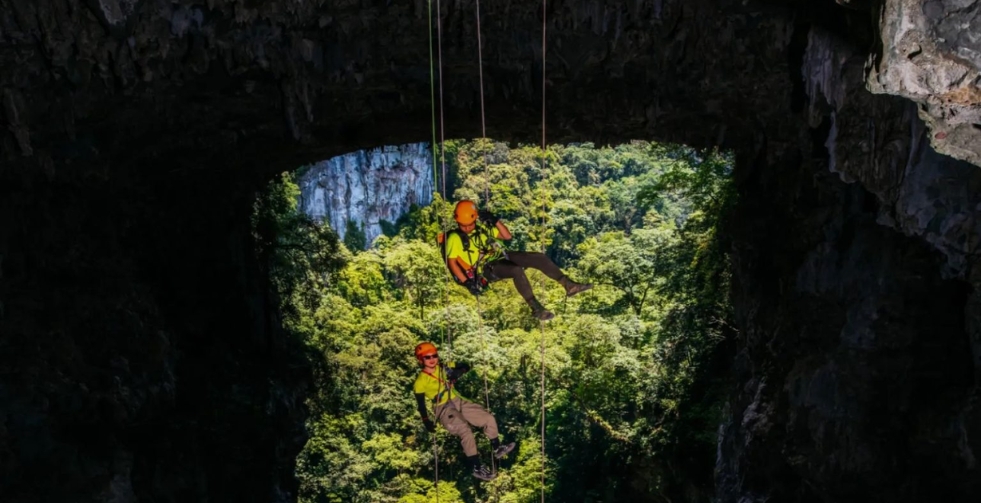
Son Dong Cave adventure
If you're dreaming of exploring a UNESCO-listed wonder filled with caves, rivers, and stunning nature, then Son Doong Cave is the perfect place to go. Just make sure to choose the right time and get in touch with us for the best advice and tour options - your Phong Nha adventure starts here!